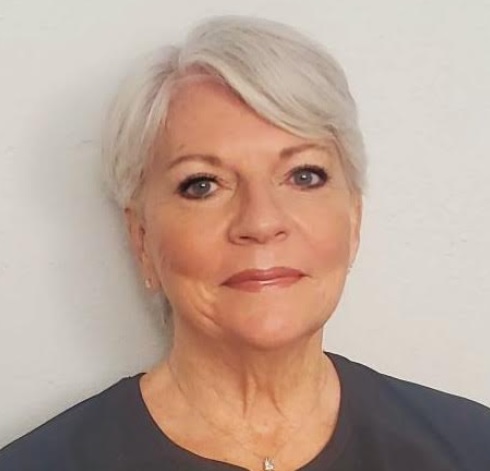When a pediatrician told Dawn Barfield last summer that her 14-year-old daughter probably had autism, Barfield figured it would result in her daughter receiving extra services in school.
Instead, Barfield found herself caught between a school district that said her daughter needed a formal autism diagnosis and diagnosticians who wouldn’t let her employer-based insurance cover the costs of the evaluation.
 “I’m just trying to figure out my way to navigate through this system,” Barfield said. “I know my daughter needs help. She’s going to be an adult in a few years. I’m almost 50. What am I going to do to get her to the next level?”
“I’m just trying to figure out my way to navigate through this system,” Barfield said. “I know my daughter needs help. She’s going to be an adult in a few years. I’m almost 50. What am I going to do to get her to the next level?”
Barfield, who lives in Atlanta, eventually got her daughter the evaluation she needed, but only after enrolling her in Medicaid, the government-subsidized health insurance for people who are low-income or disabled.
Lack of access to special education services is particularly problematic for kids with autism, according to Pamela Dixon, director of clinical services and inclusion for the national advocacy group Autism Speaks.
“The diagnosis of autism is the result of a comprehensive evaluation process, which is difficult to access for many families because they may not live near a provider with this specialty or because they lack the finances to pay for such an evaluation,” Dixon said. “This is also the case when families attempt to find intervention services after diagnosis.”
Dixon said her group has encouraged more insurance companies to cover both autism evaluations and autism services.“But,” she said, “this is still difficult to reach for many families.”
Laws on special ed services vary widely, state by state
Special education experts say Barfield’s situation, with its various obstacles, is not unique. The special education system nationwide, governed by a patchwork of state and federal regulations, is underfunded, complex, and not fluidly connected to health insurers that also have a role to play in getting kids evaluated for the special services they may need.
Already struggling to serve more than 7 million students nationwide, the system has come under even more stress during the COVID-19 pandemic, said Cynthia Vail, a University of Georgia communication sciences and special education professor, who is president of the Higher Education Consortium for Special Education.
“We really are at a critical place right now in our field,” Vail said. “It’s like we’re just hemorrhaging teachers — general education teachers, as well as special education teachers.”
Being caught, as the Barfields were, between insurers and those who evaluate the need for special education services is one aspect of the challenge facing special ed kids and their parents.
Aggravating things is a shortage of special education teachers, calculated by among others, the U.S. Department of Education. That shortage makes it harder for kids to access services even if they can get the evaluations and diagnoses required to qualify, experts say.
The shortages are “a decades-long issue,” said Laurie VanderPloeg, associate executive director for professional affairs for the Council for Exceptional Children, a nonprofit advocacy group for special education professionals.
“It has been exacerbated, certainly, with the COVID impact,” VanderPloeg said. “We’re seeing a much higher level of attrition rates and special educators leaving the profession. We’re seeing a significant increase in early retirements.”
Experts: Special ed evaluations are mandated by a complex and underfunded system
Students with disabilities are guaranteed special educational services under the federal Individuals with Disabilities Education Act. But that law is interpreted differently by the 50 state departments of education and, then, implemented differently by the nation’s 13,500 school districts. Which means that students who qualify for a specific set of services in one school may find themselves with a different set of services if their family moves to another state or even another town.

Laurie VanderPloeg is associate executive director for professional affairs for the Council for Exceptional Children.
As recently as 2020, the U.S. Department of Education determined that only 21 states and one U.S. territory were in compliance with the federal disabilities education act.
Meanwhile, parents of kids with autism face yet another web of laws with states varying widely in what sort of insurance coverage they require for autism evaluation and services.
To make matters worse, experts contend, the federal government has consistently failed to meet its obligations to pay for services dictated by the disabilities education act.
“It’s never been fully funded,” Vail said.
The federal government is supposed to provide 40% of funding that the act calls for, with states and school districts providing the remainder. But in 2021 it fell below 16%.
That could change over the next decade, however. A congressional budget bill introduced earlier this year gradually phases in funding increases to meet the 40% threshold.
“A 10-year glide path to full funding would give the districts the ability to improve outcomes for students with disabilities,” VanderPloeg said. “They could get more intensive services, they could get the curriculum supports they need [and] the enhanced technology supports they need.”
VanderPloeg said the proposed funding increase is part of an encouraging trend: Congress and President Biden’s administration seem increasingly aware of the challenges special education faces, and keen to do something about them.
“We have some very strong collaborative momentum taking place between the U.S. Department of Education and the states and the locals right now to try to support the educators as well as the students and families to try and develop a stronger, sustainable system of support over time and not just put Band-Aids in place,” VanderPloeg said.
New federal funding could help districts better afford special ed equipment that kids need
Vail said increased funding is crucial, as some districts lack the resources to provide essential learning tools, such as communication devices for students who are nonverbal.
Special education teachers shouldn’t have to resort to running fundraisers for such equipment, she said.
“If we’re doing nothing else we need to be making sure these critical functional pieces needed for individuals to lead a full life are funded,” Vail said. “It shouldn’t be you’re grasping for handouts.”
Vail said the best thing for parents of kids with disabilities to do is to join forces with other parents in similar straits, as well as professional advocacy organizations, to more loudly and consistently champion their kids’ instructional needs.
“What I have seen over the years is the families that get engaged, that engage with other families, they really have to know what to ask for, they have to know what their rights are, and they have to really understand this complex system so they can help their child navigate it,” Vail said.
Unfortunately, Vail said, not every parent has the time or the connections to take on the system.
As a single, working mother, Barfield said she fell into that category. Her daughter was born premature and, even before that pediatrician raised the possibility that she had autism, was receiving special education services for speech and learning disabilities.
Without insurance coverage she said the evaluations would have cost her thousands of dollars, an amount she could not pay.
“Just trying to work, maintain a roof over our head and everything like that to get her the necessary help,” Barfield said. “So, I’m just trying to do the best I can but they make it so difficult.”
Vail said she’s familiar with those frustrations. Families she has helped navigate the system come to her class regularly as guest speakers, and some seem worn out.
“There are some that start out very strong and after a while sometimes the system beats them down,” Vail said. “They know what they want for their child but they don’t have it in them to be the squeaky wheel. It’s just sad and it’s not right.”






























